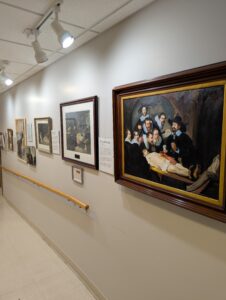Foundations of Medicine: A Journey Through Pre-Modern Healing Traditions
Explore the early roots of medicine through the lives and legacies of four towering figures whose ideas shaped centuries of medical thought and practice.

5th Century BCE – Hippocrates of Kos
Often called the “Father of Medicine,” Hippocrates (c. 460–370 BCE) laid the foundation for clinical practice as we know it today. He emphasized the importance of clean water, fresh air, nutrition, exercise, and emotional well-being—principles that still resonate in modern public health. Departing from the belief that disease was divine punishment, Hippocrates proposed that illness stemmed from natural causes and imbalances in the body’s four humors: blood, phlegm, black bile, and yellow bile.
Through careful observation, patient histories, and clinical examinations, he championed a systematic approach to diagnosis and treatment. Remarkably, Hippocrates also encouraged handwashing and the cleaning of surgical tools—practices that predate germ theory by over two millennia. His enduring legacy includes the Hippocratic Oath, a foundational text in medical ethics still honored today.
2nd Century CE – Galen of Pergamon
Aelius Galenus (129–216 CE), better known as Galen, was a Greek physician and philosopher whose influence spanned more than a thousand years. Building on Hippocratic teachings, Galen advanced the study of anatomy, physiology, pathology, pharmacology, and neurology.
A passionate advocate for logic and philosophy in medical education, Galen reinforced the theory of the four humors while expanding clinical knowledge through dissection and experimentation. His writings became standard medical texts in both the Islamic world and medieval Europe, shaping medical understanding until the Renaissance.
11th Century – Avicenna (Ibn Sina)
Avicenna (980–1037), a Persian polymath, was one of the most influential thinkers of the Islamic Golden Age. His magnum opus, The Canon of Medicine, synthesized Greek, Roman, and Persian medical knowledge and became a cornerstone of medical education in both the Islamic world and Europe for centuries.
Avicenna preserved and expanded upon Aristotelian philosophy and Galenic medicine, contributing significantly to the fields of diagnosis, treatment, and pharmacology. His work bridged cultures and eras, reinforcing medicine’s intellectual heritage.
16th Century – Andreas Vesalius
A revolutionary figure in the history of anatomy, Andreas Vesalius (1514–1564) challenged long-held misconceptions by returning to direct observation and dissection. His landmark text, De Humani Corporis Fabrica (1543), featured detailed anatomical illustrations that corrected errors in Galenic anatomy and transformed the understanding of the human body.
Vesalius is remembered as the “Father of Modern Anatomy,” a title earned by his commitment to empirical science and a legacy that redefined the study of medicine in the modern age.
Through these early visionaries, the foundations of modern medicine were set. Their commitment to observation, logic, and ethical care continues to inspire medical practice today. This exhibit invites you to discover how ancient insights still echo through the corridors of modern healing.
EXPLORE OUR EXHIBITS →
